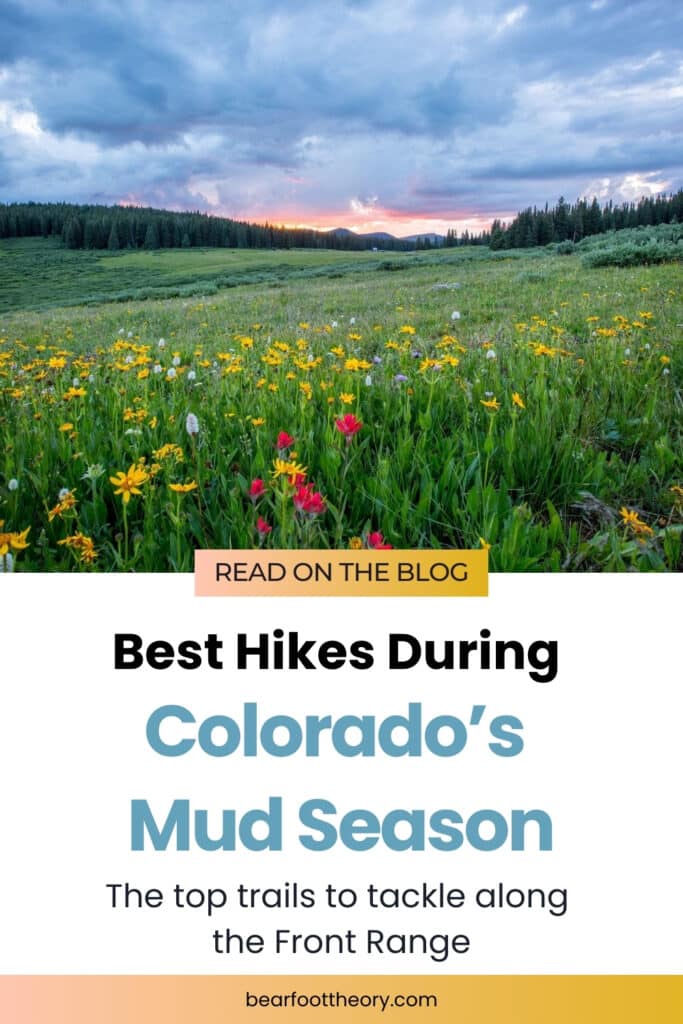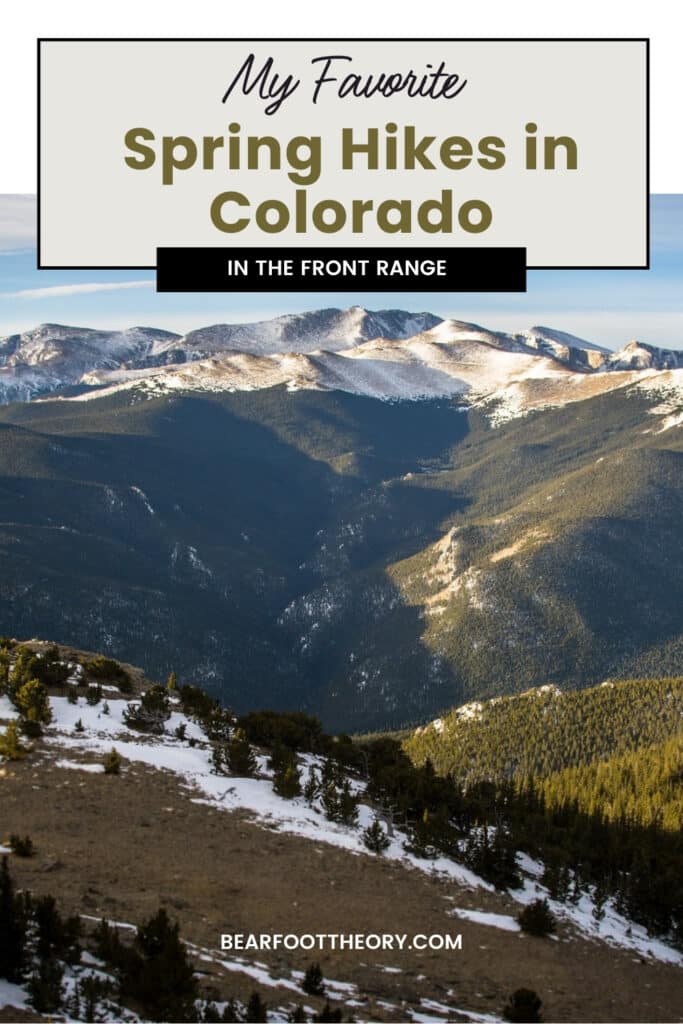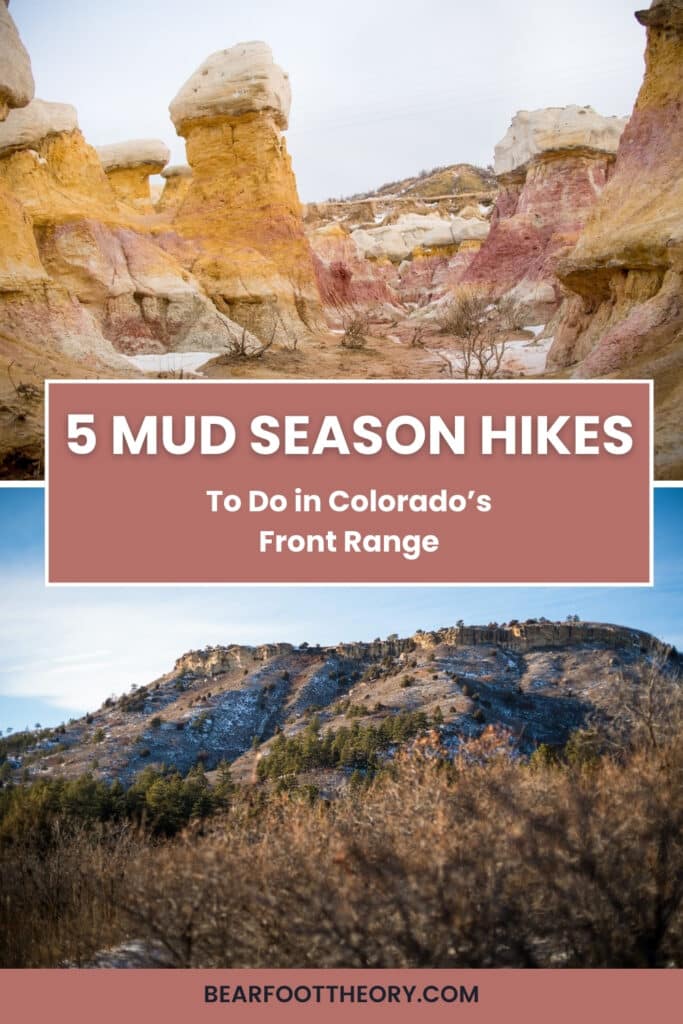5 Spring Hikes in Colorado’s Front Range
Don’t wait until the high elevation snow melts to start hiking in Colorado. Here are my top 5 Colorado mud season hikes in the Front Range that are perfect for spring.
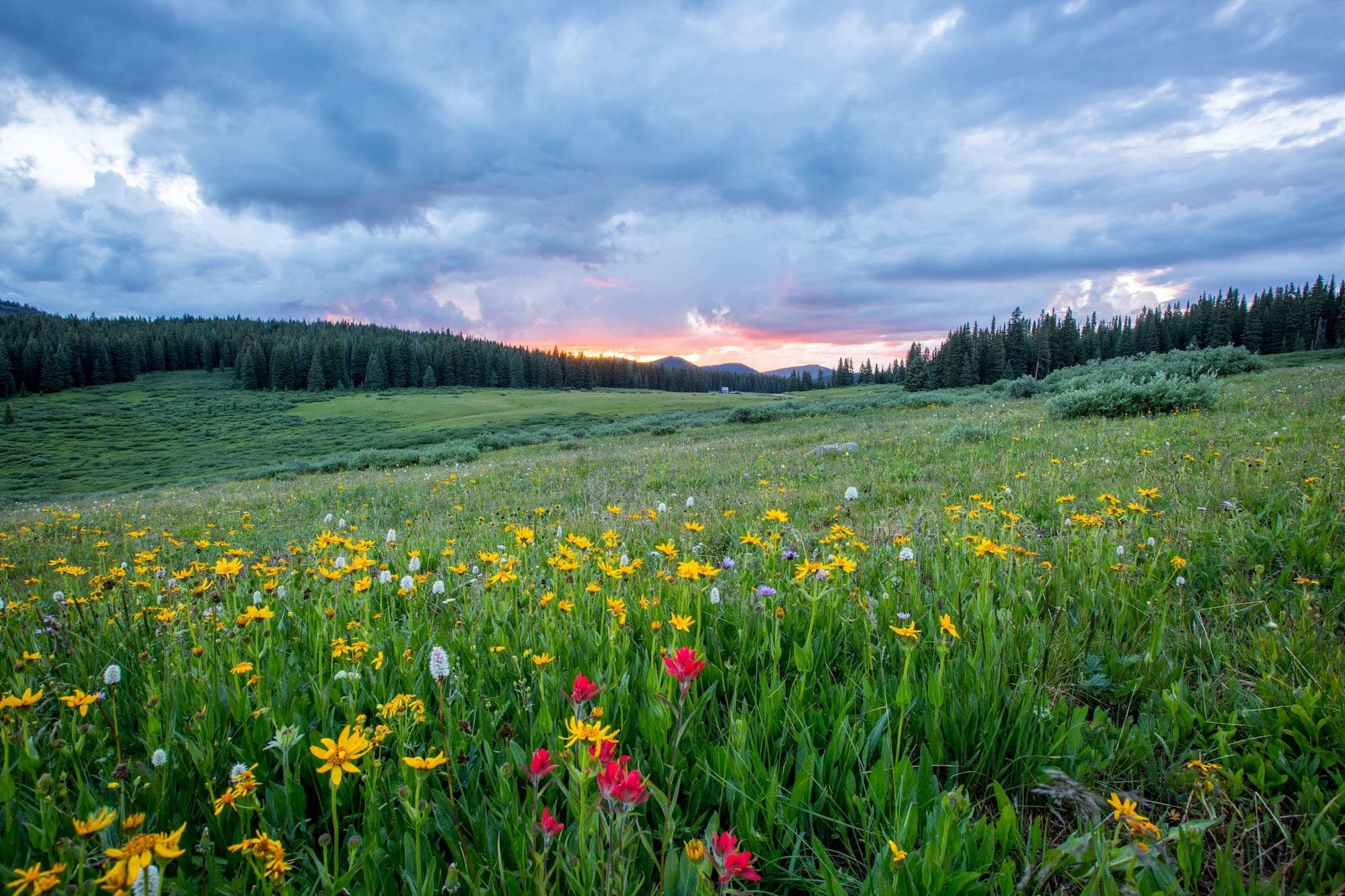
Spring in Colorado often goes by another name: Mud Season. It’s my least favorite time of year to hike. By May, I’m tired of snow, so corn skiing is out – but the mountains are still choked with snowpack. Hiking would be closer to a lesson in posthole humiliation than walking.
However, spring is a rare time of year when Denver’s foothills are more picturesque than the high mountains, thanks to green grass, warm-but-not-hot temperatures, and dry trails.
So if you’re looking for quick spring escapes on the Front Range before the high mountain snow has melted , these will be right up your alley. Get outside this spring on these five trails in Colorado’s Front Range.
This post may contain affiliate links.
1. Dawson Butte
Trail Basics
Trail Description
When my wife and I wanted to explore somewhere new one day, we luckily found Dawson Butte. While you can’t summit the namesake butte due to property lines, the five-mile loop trail that winds around the surrounding woods and meadows is a perfect trail run destination.
During spring in Colorado, the meadow along this hike is lush and green with the wetlands full of wildlife and wildflowers. The loop has enough elevation gain to make you feel accomplished or to use as training for bigger hikes or trail runs without being overwhelmingly difficult to tackle.
Water is unavailable on the trail, so bring enough for the full hike. Pets are allowed here on leashes.
Save this post!
Enter your email & I'll send this post to your inbox! You'll also receive my weekly newsletter full of helpful advice for planning your adventures.
2. Carpenter Peak Trail
Trail Basics
Trail Description
Carpenter Peak Trail is located in Roxborough State Park in Littleton, and it is a family favorite Colorado hike for us (if you head out this way, you’ll likely run into my dad volunteering at the park. It’s one of his favorite places on earth, and with good reason).
I’ve been out to this park dozens of times, and I’m still impressed by its beauty each and every visit. The dramatic cliffs of the Fountain and Morrison formations are the backbone of this park.
If you’re looking for a peak to tackle, Carpenter Peak is a 6.4-mile round-trip hike and gives you views out over the formations to the plains all the way past downtown Denver to DIA on a clear day.
Looking for something a little easier? For the best views of the rocks, combine the Fountain Valley Loop and South Rim Trail into a five-mile tour of the Colorado uplift.
3. Paint Mines Trail
Trail Basics
Trail Description
Heading further south and out onto the Eastern Plains is Paint Mines Open Space. They sit east of Colorado Springs on Highway 24 in a small town called Calhan.
These clay cliffs are the mini-Badlands of Colorado, offering a different landscape to the other Colorado mud season hikes in this blog post. With a mix of trails and loops, starting or ending in the hyper-real colored hoodoos, head down to this open space if you want a taste of the surreal.
I suggest going clockwise on the biggest loop, taking in the plains and grasslands in their lush, green springtime glory and ending at the pink and orange bluffs and hoodoos. Paint Mines isn’t the biggest area to explore, but it might be one of the most unique on the Front Range.
4. Boulder Skyline Traverse
Trail Basics
Trail Description
If you are looking for some solid fourteener training or you want to feel like an endurance athlete for a day, tackling Boulder’s skyline traverse is a worthy challenge.
Compromised of South Boulder Peak, Bear Peak, Green Mountain, Flagstaff Mountain, and Mount Sanitas, this 29.9-mile trek with over 10,000 feet of vertical is not for the faint of heart. Afterward, you can spend a day enjoying Boulder and treating yourself to a well-earned meal at a local restaurant.
But if you are jonesing for a big Colorado spring hiking fix, this will certainly do it. Make sure to bring plenty of food and water and maybe even something to treat water with for refills.
In spring and early summer, the creeks in Colorado should be flowing enough that you can fill up at crossings between peaks during your hike. If you aren’t training or just want a mellower hike to take on, any peak can be tackled on its own or linked up in a shorter sequence.
In particular, Green Mountain on its own is a great 6-mile round-trip hike that starts from the main Chautauqua parking area and acts as a great post-winter tune-up. Bear Peak is another challenging 6-mile route starting from NCAR with 360 views from the top.
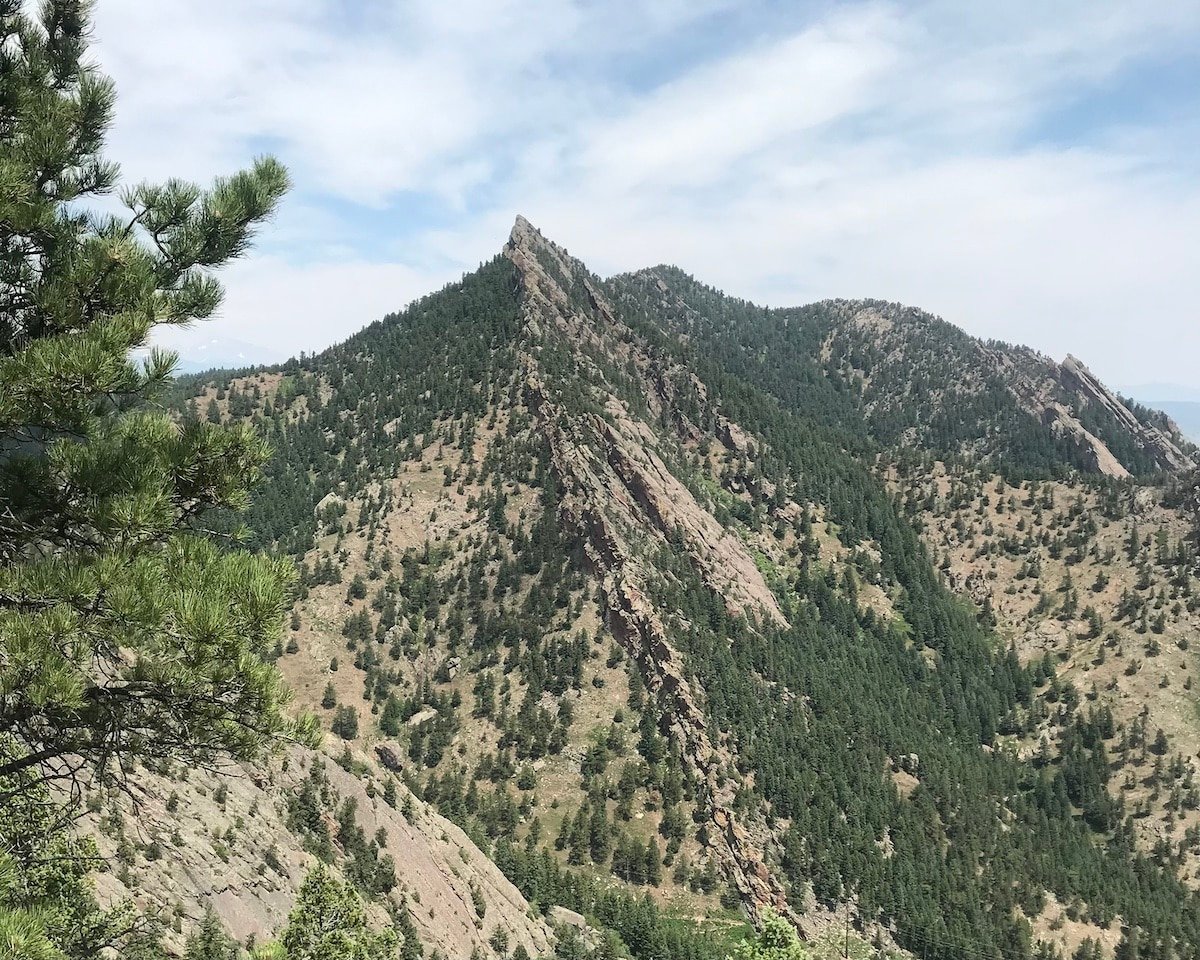
5. Chief Mountain Trail
Trail Basics
Trail Description
Located on Highway 103 outside Idaho Springs, Chief Mountain is a quick, but effective Colorado spring hike. While the higher peaks might still be post-hole hell, Chief Mountain tops out at 11,709 feet and the snow clears earlier thanks to its relatively lower elevation.
With the summit peeking out above the tree line, you get massive, close-up views of Mount Evans (one of the three fourteeners visible from Denver) and a little taste of hiking at altitude. Using Chief as another tune-up before fourteener season is a great way to see how you’ll do at real altitude without pushing yourself too far.
The trail covers about 1,000 feet in two miles but does so with great switchbacks. Chief also makes for a great first mountain to climb for visiting friends and family.
Like any Rocky Mountain hike, take plenty of food, water, and layers, and keep an eye on how everyone is feeling with the altitude.
Frequently Asked Questions
As a state known for over 300 days of sunshine each year, you can hike in Colorado during any month (as long as you bring the correct gear and wear proper hiking attire). The best time for hiking in Colorado is often June to October. This is the time of year when most of the trails (even at high elevations) are accessible, free of snow, and offer pleasant hiking conditions.
It honestly depends on how muddy the trail has become. I’ve had to turn around before completing my hike (especially during spring) on trails in Colorado that are extremely muddy to avoid damaging the environment. Never hike off the trail to avoid the mud as this widens the trail and damages vegetation.
If you’re hiking in high-elevation areas and want to avoid snow, August is the most promising month for snow-free conditions. You usually won’t encounter snow in late July or early September. I recommend reading recent trail reports or calling ranger offices for hikes you plan to do to get the most up-to-date conditions.
More Colorado Adventures
Save this post to Pinterest
What is your favorite Colorado mud season hike? Let me know in the comments!

